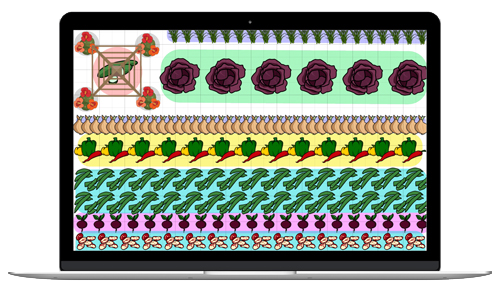
Planting, Growing, and Pruning Hydrangea
The Almanac Garden Planner - Use It Free for 7 Days!
Plan your 2025 garden with our award-winning Garden Planner.
For a more detailed overview of the many types of hydrangeas, check out Hydrangea Varieties for Every Garden.
There are two main groups of hydrangeas:
Group 1: Plants that Bloom on New Growth (This Year’s Stems)
The following hydrangeas, which form their buds in early summer on new growth, will flower reliably each year, requiring no special care.
- Panicle hydrangeas (Hydrangea paniculata)
- ‘Grandiflora’ and ‘PeeGee’ are large old-fashioned, floppy varieties; ‘Tardiva’, ‘White Moth’, and ‘Pee Wee’ fit the scale of small gardens. ‘Limelight’ produces cool-green flowers and grows to a height of 6 to 8 feet.
- Smooth hydrangeas (H. arborescens)
- Look for the cultivars H. arborescens ‘Grandiflora’ and ‘Annabelle’, which produce many large (up to 14 inches across), tight, symmetrical blooms in late summer.

Group 2: Plants that Bloom on Old Growth (Last Year’s Stems)
If you live in Zone 8 or warmer, choose plants from this group. Gardeners in cool climate zones will find many of them a challenge, because they set flower buds in the fall. Although hardy to Zones 4 and 5, the buds are prone to damage by an early frost in fall, a late frost in spring, or excessively cold temperatures when dormant in winter. This, along with untimely pruning, can result in inconsistent or no flowering.
- Oakleaf hydrangeas (H. quercifolia)
- You can expect an exceptional fall color from ‘Snow Queen’, ‘Snow Flake’, and ‘Alice’.
- Bigleaf hydrangeas (H. macrophylla)
- We love ‘All Summer Beauty’ (mophead), which has profuse, dark blue flowers that turn pinker in soils with near-neutral pH. If buds are winter-killed, the plant will form new ones in spring and still bloom.
- ‘Nikko Blue’ (mophead) is vigorous, with large, rounded, blue flowers.
- ‘Blue Wave’ (lacecap) produces rich blue to mauve or lilac-blue to pink flowers.
- ‘Color Fantasy’ (mophead) has reddish or deep purple flowers and shiny, dark green leaves. It grows to about 3 feet tall.
- Mountain hydrangeas (H. serrata)
- ‘Bluebird’ and ‘Diadem’ are early bloomers. In acidic soil, ‘Preziosa’ produces blossoms of an extraordinary blend of pale shades of blue, mauve, violet, and green.
- Climbing hydrangeas (H. anomala ssp. Petiolaris)
- ‘Firefly’ boasts variegated foliage.
ADVERTISEMENT
wHEN PRUNING IN FALL DO YOU CUT OFF ALL THE LEAVES ON STEMS
Root bound hydrangea please tell me how to replant into the ground.
It is in a pot but not doing well.
I live in New Zealand temperate climate.
My Endless Summer hydrangea bloomed beautifully until the polar vortex winter several years ago. It still grows and has lovely healthy foliage, but it won’t bloom no matter what I try. Should I just take it out and plant a different one?
Have you tried a phosphorous fertilizer or epsom salt? A master hydrangea gardener I know told me that epsom salt is the best fertilizer for hydrangeas. You can just sprinkle a handful around the base of each plant and water like crazy to keep the soil moist and help the salt gradually continue to nourish it.
My plant has black spots on the leaves what do I need to do.
Black spots on hydrangea leaves may be caused by a number of diseases by fungal, bacterial, and viral pathogens. Common diseases include the Cercospora leaf spot (a fungal disease common in moist conditions) and Anthracnose (a fungal disease which also favors high humidity or precipitation). Remove infected leaves and all plant debris, including fallen leaves, regularly throughout the growing season. Remove any nearby weeds. Prune out any dead/diseased branches, and be sure to disinfect any tools that you use to prune, etc. Provide good air circulation and drainage and avoid overhead watering. Fungicides may help as an early application in spring when symptoms first appear, but would not help this late in the season. Check with your local Cooperative Extension https://www.almanac.com/cooperative-extension-services for advice for the best fungicides to use for your area and purpose. Here’s an article on anthracnose, in case it helps: https://www.almanac.com/pest/anthracnose.
We planted 3 macrophylla, may not be spelled right, lol with big green leaves. The nursery & tag says shade. I set up a sun shade and water every other day making sure the soil is wet to depth off one inch but not soaking wet. My problem is the leaves are curling or spotting a light tan color. It still has a lot of green but I fear it's spreading. What is the problem and how can I take care of it?
My hydrsndra looked sad so I cut it way back would I be best to did it up
Plant new one in spring .
My stems were rot Tom could break off with my hands. Feedback please
Thank you
Are you watering the roots or leaves? Water on leaves may cause curling or sun can burn leaves with water on them.
I bought a hydrangea plant that was obviously a rooted cutting (it was very inexpensive!) and had 2 stems coming off of it. Within a week one stem withered and died, but the other is doing fine, so I have a flourishing single stem hydrangea plant. Is there a way to persuade it to branch out horizontally?













